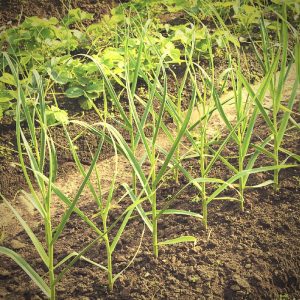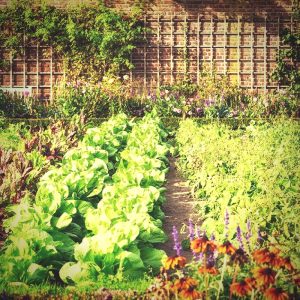
As you start planting vegetable gardens it’s important to know how the garden will be laid out. The layout of your own garden will depend on what vegetable you want to grow, the planting space and if you would like to opt for companion planting. Here are some helpful tips on how to layout your own garden and start planting vegetables.
Sit Down and Plan
Before choosing a garden layout you need to decide on what type of vegetable you would like to grow and where you would like to plant them.
![]() Here are other factors you need to consider for your garden layout:
Here are other factors you need to consider for your garden layout:
- Garden Space
- Amount of Light in the Space
- Drainage System
- Soil Amendments
- Type of Vegetable
- Additional Space (if needed)
You should also think about whether you want to grow one type of vegetable like lettuce and tomatoes or if you want one type of vegetable with different kinds. Researching about the amount of light a certain vegetable needs and the amount of space that each need to be planted are both helpful facts to find out.
Make a list of vegetables you want to plant and find out the plant requirements of each and compare it with the garden space you have. This should give you an idea of where you want to plant certain vegetables in your space.
Check out the post: How to Set up a Backyard Garden
Choose your Garden Layout
 There are three basic vegetable garden layouts and they are: rows, beds and “potager” style.
There are three basic vegetable garden layouts and they are: rows, beds and “potager” style.
The most popular rows style of layout requires planting seeds in a row which could either mean planting one type of seed in a row or different seeds in a row.
The bed type of layout is similar the rows style but in a smaller level. This layout allows access to the plant beds from the exterior of the garden or as you walk through the garden path instead of coming from inside of the plant bed. This is particularly convenient to avoid stepping on the beds which tends to pack in the soil and makes it difficult to dig and aerate in the spring or fall. Plant beds are great ways to maximize a garden space and you can even use raised beds for easy gardening.
The most decorative style of layout is the “potager” which means kitchen garden in French. This layout is described as geometric which allows you to layout your garden in circles or arrange plants by color or even food type.
A raised bed garden is something you should consider, check out this post to learn all about raised beds
Consider Companion Planting
 The idea behind companion planting involves planting different kinds of plants together so that they help each other grow. A perfect example of this is planting beans, corn and squash together which were commonly done by Native Americans. While the corn gives the beans a place to climb, the beans gives its three companions nutrients in the soil and the squash serves as a shade to the roots of the plants beside it. This not only prevents weeds from growing, it also saves up on water.
The idea behind companion planting involves planting different kinds of plants together so that they help each other grow. A perfect example of this is planting beans, corn and squash together which were commonly done by Native Americans. While the corn gives the beans a place to climb, the beans gives its three companions nutrients in the soil and the squash serves as a shade to the roots of the plants beside it. This not only prevents weeds from growing, it also saves up on water.
Other great plants for companion planting are onions, which scares slugs and aphids away, tomatoes, which grow well with carrots and basil, which improves the taste of tomatoes. Another example is horseradish and potatoes which when planted together give your potatoes protection from disease.
In planting vegetable gardens, this concept is certainly worth considering and if you want to get more information about it, you can do some research online or in your local library.
The post Laying Out and Planting a Vegetable Garden appeared first on All around the house.
from All around the house http://allaroundthe.house/vegetable-garden-planning/
via IFTTT
 Here are other factors you need to consider for your garden layout:
Here are other factors you need to consider for your garden layout:
Comments
Post a Comment